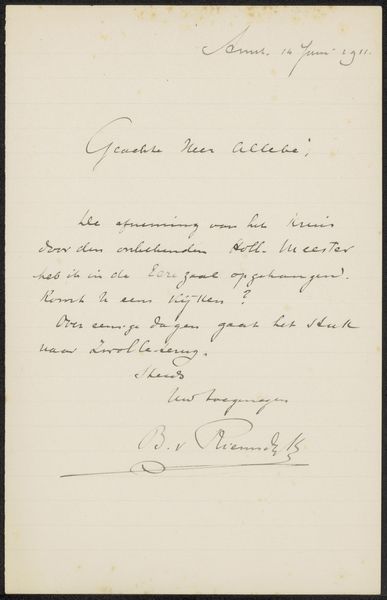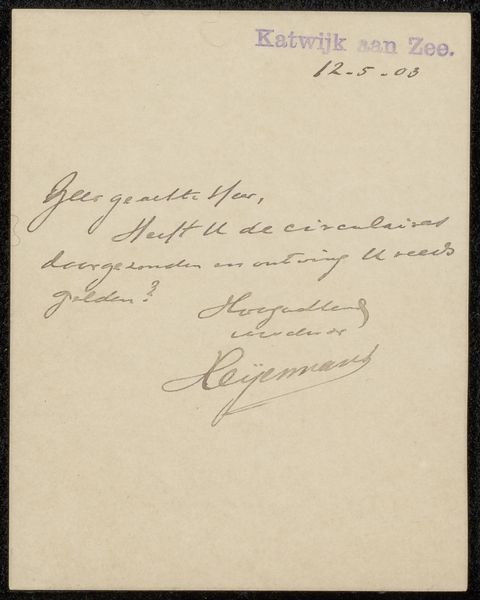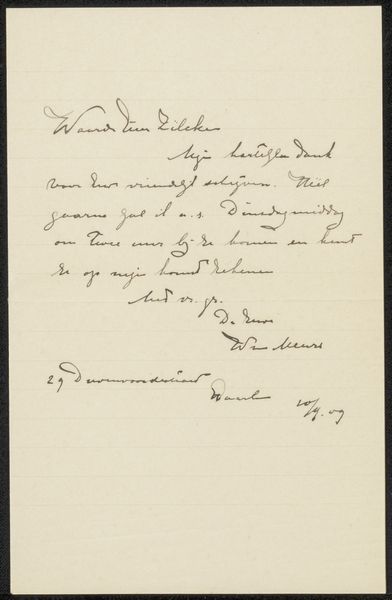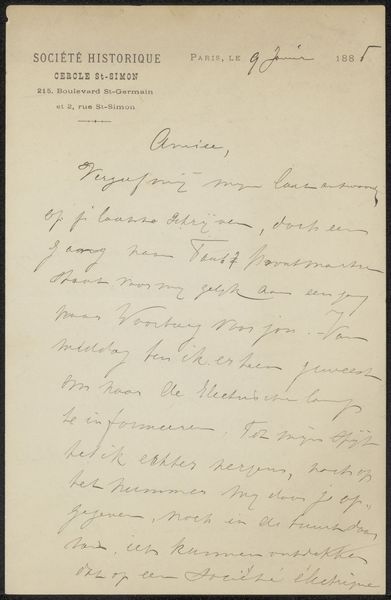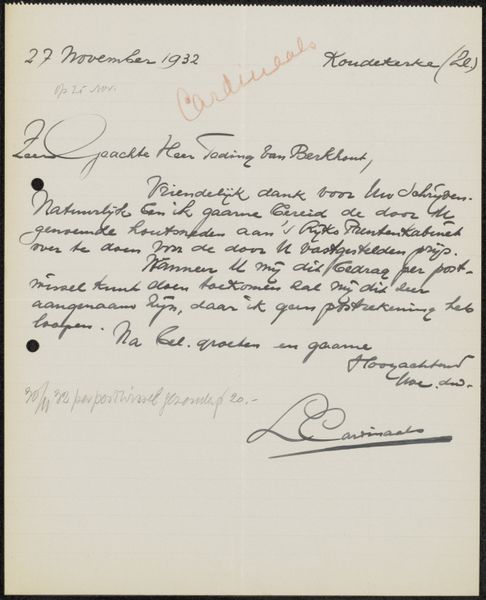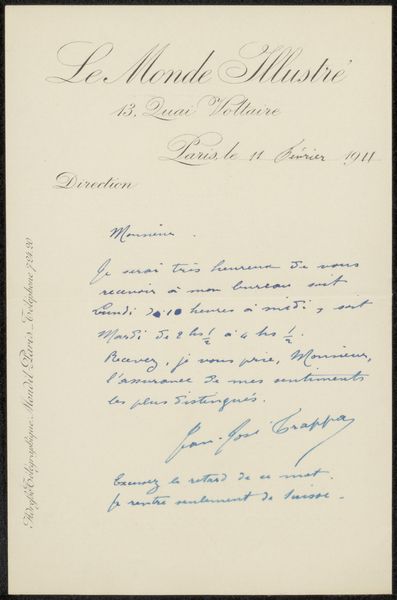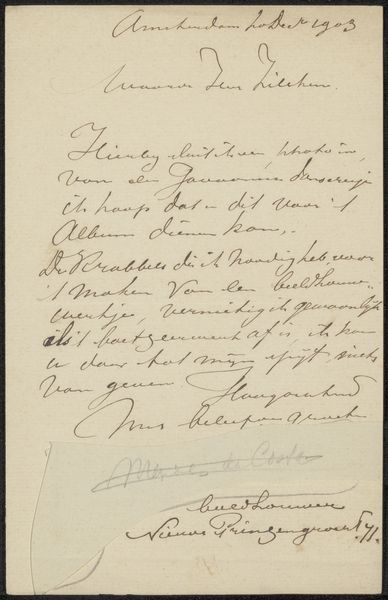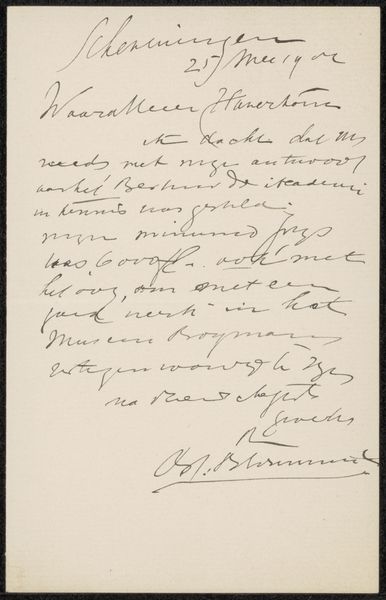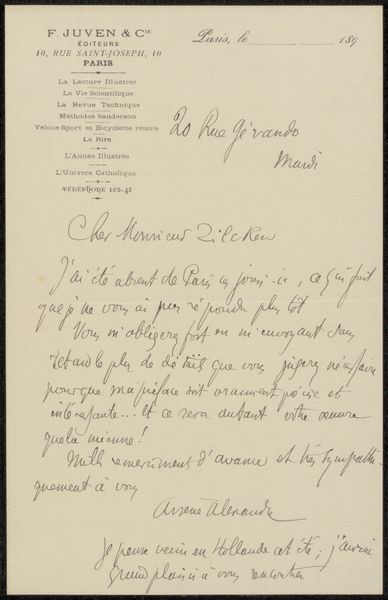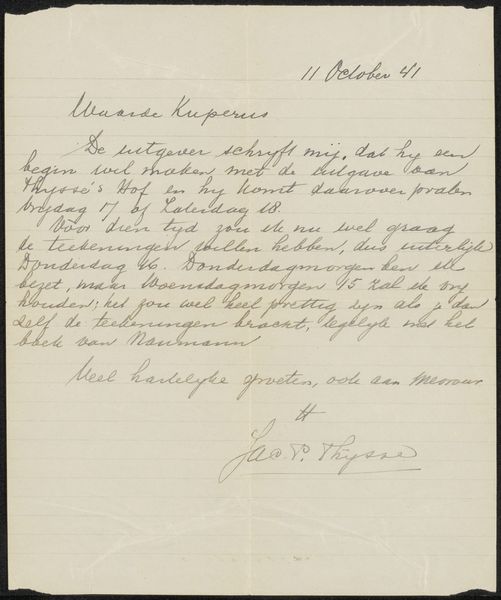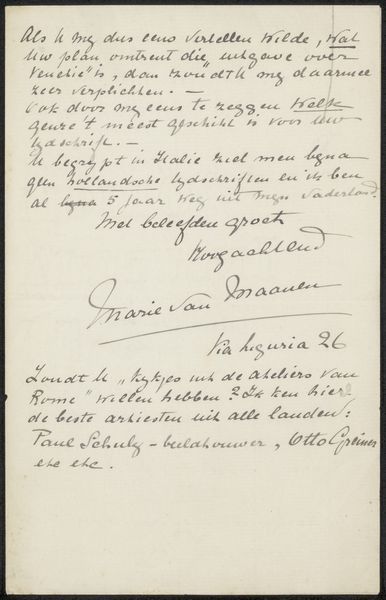
drawing, paper, ink
#
drawing
#
paper
#
ink
Copyright: Rijks Museum: Open Domain
Curator: Here we have "Brief aan Ary Johannes Lamme," or "Letter to Ary Johannes Lamme," attributed to Josephine Fodor-Mainville, and possibly created around 1863. It’s ink on paper—a small, unassuming document, really. Editor: Yes, "unassuming" is a great way to describe my first impression. It reads very formally, but it feels incredibly intimate to see someone's handwriting like this. What do we know about the context of this letter? Curator: Looking closely, we see how Fodor-Mainville carefully forms each word. Note the looping ascenders and descenders, typical of 19th-century penmanship. The rhythm creates a visual harmony on the page, a deliberate contrast to the seemingly rushed contents in the message itself. Editor: It appears she's confirming receipt of Lamme's letter and mentioning a settlement of accounts. Understanding their relationship, though, adds layers. Fodor-Mainville was a renowned opera singer—a woman navigating a male-dominated world, asserting her agency through art and likely also business. I’m very curious to read between the lines of that. Curator: Absolutely. And from a purely compositional standpoint, consider how the blank space frames the text, creating a sense of elegant restraint. The varying line weights emphasize the importance of certain phrases—see how the signature flourishes. Editor: I would agree and suggest these compositional elements highlight the social dance in these situations. While on the surface, it is a letter of acknowledgement for an amount that satisfies existing agreements and shows gratefulness, the underlying social dynamics give rise to certain artistic choices of visual messaging and how Josephine wished to convey her voice at the time. She wanted to control that medium to present the ideal representation of herself to the male recipient. Curator: It's in this tension between the personal and professional, the expressive and the constrained, that the work finds its real interest, don't you agree? Editor: Indeed. I will add one of the appeals is the feeling of immediacy in the work – as though you are getting an unedited glimpse into an earlier moment of thought. Curator: Ultimately, its power rests in its delicate balance of text and tone. A tiny yet carefully rendered object lesson of social and professional life during her time. Editor: I feel as though these archival gems really illuminate what lived experiences looked like. And a beautiful peek into what making a name as a woman must have been like in those circumstances.
Comments
No comments
Be the first to comment and join the conversation on the ultimate creative platform.

